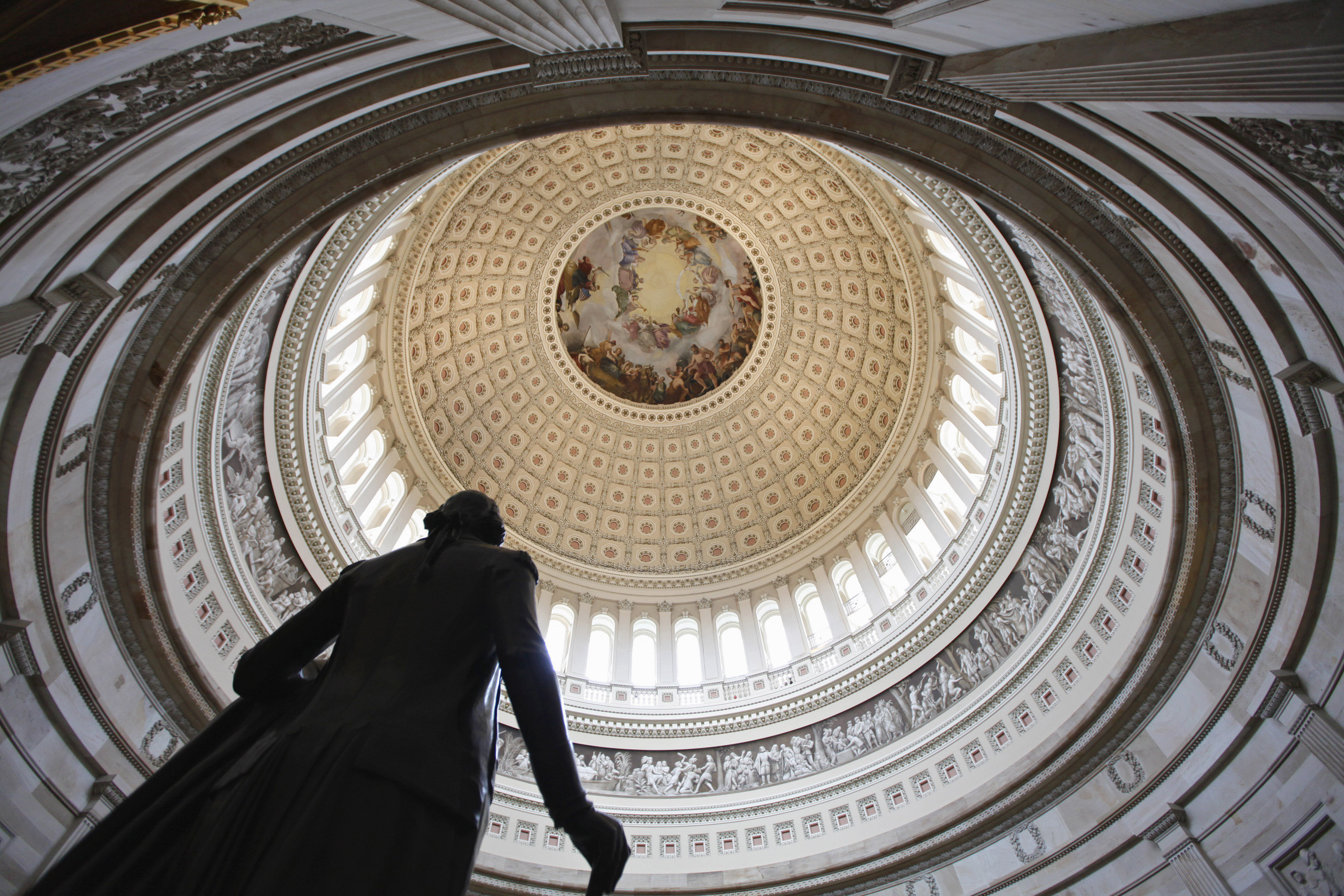Capitol and capital problem
Friday, January 1, 1904
The United States has many symbols. There's the flag, of course, and cases can be made for the White House, the U.S. seal, the Washington monument, the American bald eagle and the Capitol dome. All have their following, but each deserves at least a bit of respect. Some get it. When the eagle, for example, was placed on the endangered species list, a broad-based effort to protect it and build its population proved successful. Other symbols, though, get less support. The roof of the Capitol -- the dome -- currently tops the list.
The dome, arguably the foremost symbol of the federal government, is in poor condition. It might look fine from afar, but close inspection shows that the exterior of the dome is riddled with cracks and breaks, about 1,300 according to architects and engineers. The exterior damage allows water to seep into the interior. As any homeowner who has dealt with a leaky roof knows, the result of such decay is lamentably predictable.
So it is with the dome. Officials report that at least 100 pieces of the dome already have been removed or have fallen off. Inside the dome, ornamentation is beginning to rust, stains are starting to appear and the fresco, frieze and other works of art there are endangered. There is understandable worry, too, that if major repairs aren't undertaken soon, public safety will be compromised. Timely repairs, then, would seem to be in order.
That seems unlikely. Symbol or not, funding for repairs to the dome have been caught up in the partisan political rancor that has makes congressional funding approval for any project an exercise in frustration. Repairing the roof of one of the most recognized buildings in the United States, and perhaps the world, would seem like the perfect project to overcome such gridlock. Nope.
The GOP-controlled House voted earlier this year to trim the Capitol maintenance budget, part of the Republican effort to reduce the federal deficit. The Senate did a bit better, but not much. The appropriations committee there voted to provide some funding, but there are no current plans that anyone knows about for the full Senate to vote on the appropriation. Meanwhile, the dome continues to leak and the damage to the building, its interior and national pride accrues.
Repairs, experts estimate, would cost at least $61 million, a lot of money but not so much that the nation can't afford to invest the amount in such an important project. There is a deal in Congress to fund government programs at current levels. That bill is expected to reach a vote later in the month, but even if approved it wouldn't help. There's no money for repairs in the short-term appropriation bill.
That omission should be fixed. Sen. Charles Schumer, D -N.Y., says funds for the dome project should be incorporated into the short-term legislation. It's a sound suggestion. Delaying vital repairs means the amount and speed of damage will increase and the eventual cost of repairs will escalate. Taxpayers deserve better.
Repairs to the dome need not be caught up in partisan gridlock. Schumer, no stranger to party-based bickering, understands that. "There is a time and place to debate federal spending and the proper role of government, but most Americans believe that when your house has a leaky roof, you pay to fix the roof." He's right. Funds for dome repairs should be approved promptly.
